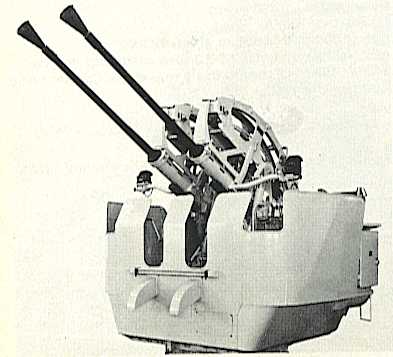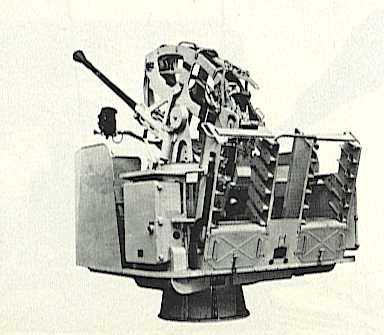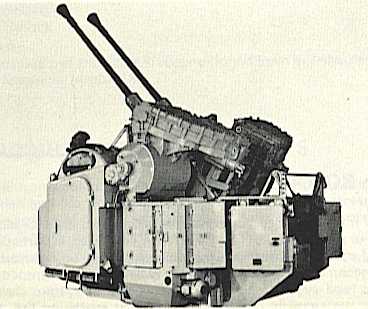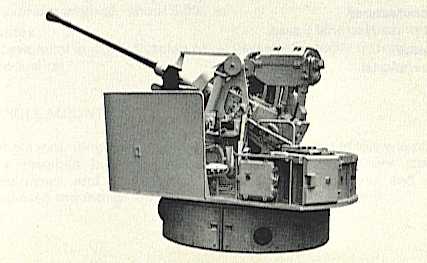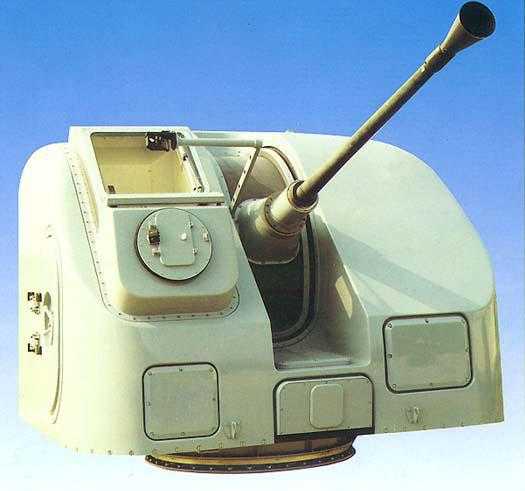
Developed from the Bofors 40 mm/70 Model 1948. In the 1960s, OTOBreda started building the Model 1948 under license from Bofors, but since that time they have developed many of their own versions. These are in general good weapons, having high rates of fire and some with dual-feed (HE and AP) capabilities. OTOBreda is now OTO-Melara.
The "Compact" twin mount has been superseded by the newer "Fast Forty" which is available in both single and twin mountings.
These guns are much faster reacting than the World War II era Bofors 40 mm/56, but perhaps their greatest feature, at least when used in the anti-missile mode, is their higher accuracy. Breda claims that a twin Fast Forty, firing 900 rounds per minute, can kill an incoming supersonic missile flying in a straight line at ranges as great as 3,280 yards (3,000 m). The mount automatically switches from the lighter HE round to the heavier APFSDS when the missile reaches a range of 1,100 yards (1,000 m).
| Designation | See Mounting notes, below |
|---|---|
| Ship Class Used On | Many |
| Date Of Design | about 1960 |
| Date In Service | about 1965 (Fast Forty) |
| Gun Weight | N/A |
| Gun Length | N/A |
| Bore Length | about 71.1 in (2.800 m) |
| Rifling Length | N/A |
| Grooves | N/A |
| Lands | N/A |
| Twist | N/A |
| Chamber Volume | N/A |
| Rate Of Fire | Breda produces these guns in a 330 RPM version and has now developed 450 RPM versions |
| Type | Fixed |
|---|---|
| Weight of Complete Round | PFHE: 5.4 lbs. (2.5 kg) HE-T: 5.3 lbs. (2.4 kg) 3P: 5.5 lbs. (2.5 kg) APFSDS: 5.1 lbs. (2.3 kg) |
| Projectile Types and Weights | PFHE: 1.94 lbs. (0.88 kg) HE-T: 2.12 lbs. (0.96 kg) 3P: 2.42 lbs. (1.1 kg) APFSDS (penetrator): 0.44 lbs. (0.20 kg) |
| Bursting Charge | HE-T: 0.254 lbs. (0.115 kg) 3P: 4.2 oz (120 g) Octol, 1,100 tungsten pellets of 0.12 in (3 mm) diameter APFSDS: N/A (solid tungsten alloy rod) |
| Projectile Length | PFHE: 8.3 in (21 cm) APFSDS: 7.9 in (20 cm) |
| Complete Round Length | 21.4 in (53.44 cm) |
| Propellant Charge | 1.07 lbs. (0.485 kg) |
| Cartridge | 40 x 365R mm |
| Muzzle Velocity | HE-T: 3,297 fps (1,005 mps) PFHE: 3,363 fps (1,025 mps) 3P: 3,320 fps (1,012 mps) APFSDS: N/A |
| Working Pressure | 21.8 tons/in2 (3,250 kg/cm2) |
| Approximate Barrel Life | N/A |
| Ammunition stowage per gun | See Mount / Turret data, below |
APFSDS penetrator has a diameter of 0.43 inches (1.1 cm).
| Elevation | Range |
|---|---|
| Maximum Horizontal Range | 13,675 yards (12,500 m) |
| AA Ceiling | 28,550 feet (8,700 m) |
This weapon uses two OTOBreda 40 mm/L70 guns and is used on many types of warship from fast patrol boats to frigates. In service in Italian, Argentine, South Korean and other navies.
| Elevation | -13 / +85 degrees |
|---|---|
| Elevation Rate | 60 degrees per second |
| Train | 360 degrees |
| Train Rate | 90 degrees per second |
| Working Circle | 114.3 in (2.902 m) |
| Total weight with / without ammunition | Type A: 16,090 lbs. / 12,125 lbs. (7,300 kg / 5,500 kg) Type B: 13,890 lbs. / 11,680 lbs. (6,300 kg / 5,300 kg) |
| Gun Recoil | 9.8 in (25 cm) |
Type A mount has a 736 round magazine with deck penetration. Type B mount has a 444 round magazine and no deck penetration.
Tests conducted by the Italian Navy in 1976 indicated this weapon had 30% chance of destroying an incoming sub-sonic missile outside of 900 meters (1,000 yards).
The successor to the Compact mount described above with dual ammunition feed and a higher rate of fire.
| ROF | 450 rpm per gun, 900 rpm total per mount |
|---|---|
| Elevation | -13 / +85 degrees |
| Elevation Rate | 70 degrees per second |
| Train | 360 degrees |
| Train Rate | 100 degrees per second |
| Working Circle | 114.3 in (2.902 m) |
| Gun Recoil | 3.9 to 4.3 in (10 to 11 cm) |
Dual feed mechanism to allow switch from PFHE to APFSDS rounds with two magazines per gun. Type A mount has a total capacity of 736 HE round with deck penetration for the mount. Type B mount has a total capacity of 444 HE round magazine and no deck penetration for the mount. Both types have a 200 round APFSDS magazine in addition to the HE magazine.
OTOBreda claims that the twin Fast Forty using PFHE ammo can kill a supersonic missile at ranges up to 3,000 meters (3,280 yards). If a missile gets to within 1,000 meters (1,100 yards) the the weapon automatically switches from the PFHE to the APFSDS magazine.
A single version of the Twin Fast Forty with similar specifications.
| Type | Control | Weight (with ammunition) | Ammunition feed | Rate of fire | Elevation | Elevation Rate | Gun Recoil | Training | Train Rate |
|---|---|---|---|---|---|---|---|---|---|
| A | Remote-controlled | 9,590 lbs. (4,350 kg) | Dual feed with two 42 round magazines and 5 rounds in the gun feeder |
450 rpm | -13 / +83 degrees | 75 degrees per second | 3.9 to 4.3 in (10 to 11 cm) | 360 degrees | 130 degrees per second |
| B | Simple on-mount sighting system | 10,030 lbs. (4,550 kg) | |||||||
| C | Computerized FCS with on-mount TV tracker and laser rangefinder | 10,140 lbs. (4,600 kg) |
An earlier open topped twin 40 mm mount served from a 32 round autofeeder magazine that elevates with the gun or loaded from the standard four-round clip. Production started in 1969. These mounts were retrofitted to the German Hamburg class destroyers.
| Elevation | -13 / +85 degrees |
|---|---|
| Elevation Rate | 95 degrees per second |
| Train | 360 degrees |
| Train Rate | 95 degrees per second |
| Weight | 14,350 lbs. (6,510 kg) without ammunition plus 220 lbs. (100 kg) for battery |
| Gun Recoil | 9.8 in (25 cm) |
| Rate of Fire | Probably 240 RPM |
Advanced version of Bofors 40L70 Naval Gun with 144 ready rounds, digital servos and a fiberglass cupola. Available in both remotely controlled unmanned and single operator manned versions.
| Elevation | -9 / +83 degrees |
|---|---|
| Elevation Rate | 44 degrees per second |
| Train | 360 degrees |
| Train Rate | 135 degrees per second |
| Weight | 8,700 lbs. (3,950 kg) |
| Rate of Fire | 300 RPM |
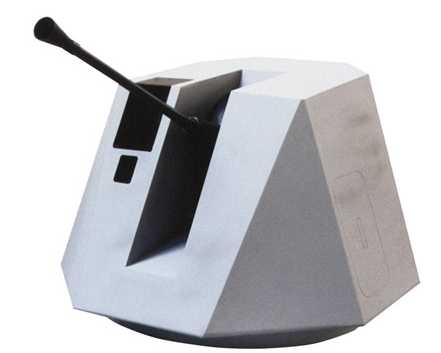
A single 40 mm/L70 using a 144 round Model 1971 automatic magazine. Crew is normally two on mount with one on standby, but some versions can be operated by a single operator. Marketed as the Breda/Bofors 350P and is analogous to the Bofors SAK 350 model. Also produced under license in Spain.
| Weight | 7,275 lbs. (3,300 kg) without ammunition plus 220 lbs. (100 kg) for a battery |
|---|---|
| Elevation | -10 / +90 degrees |
| Elevation Rate | 45 degrees per second |
| Train | 360 degrees |
| Train Rate | 80 degrees per second |
| Rate of Fire | 240 rpm |
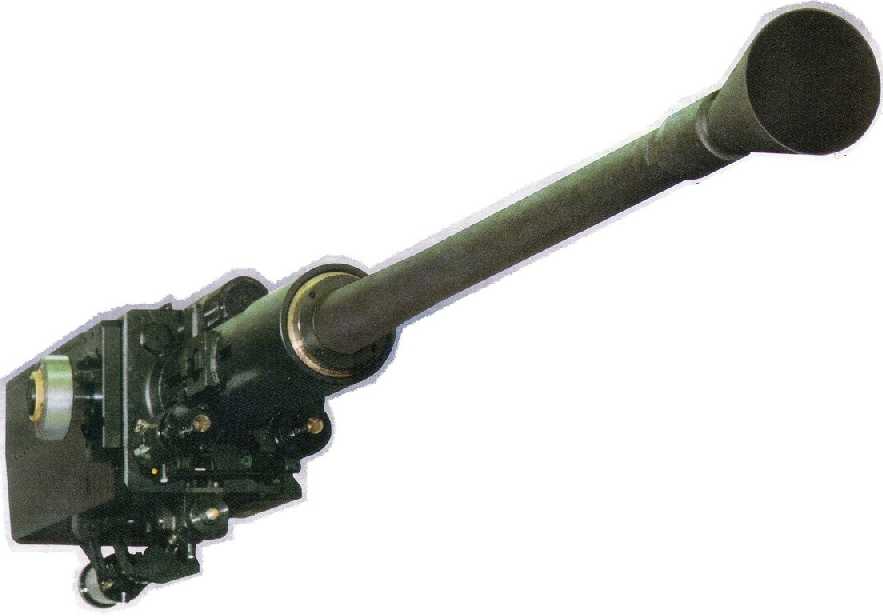
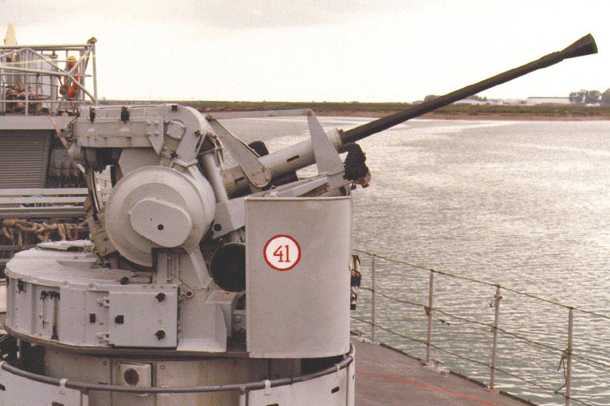



- Entry point for APFSDS rounds resupply
- Left magazine for APFSDS rounds
- Left conveyor for APFSDS rounds
- Twin ammunition feed (upper = APFSDS, lower = PFHE)
- Left conveyor for PFHE rounds
- Right conveyor for PFHE rounds
- Assisted ammunition loading system
- Right conveyor for APFSDS rounds
- Right magazine for APFSDS rounds
- Left magazine for PFHE rounds
- Entry point for PFHE rounds resupply
- Right magazine for PFHE rounds

Image copyrighted by OTO-Melara.

Image copyrighted by OTO-Melara.
Data from:
- "Jane's Pocket Book 9: Naval Armament" edited by Denis Archer
- "The Naval Institute Guide to World Naval Weapon Systems 1991/92" by Norman Friedman
- "Jane's Ammunition Handbook: Ninth Edition 2000-2001" edited by Terry J. Gander and Charles Q. Cutshaw
- "Rapid Fire" by Anthony G. Williams
Press releases and other:
- OTO-Melara Press Releases
- IZAR (now FABA) Press Releases
Special help from Mark Fitzpatrick, Matthew Rodchenko and Joakim Wohlfeil
10 September 2006 - Benchmark
26 May 2012 - Updated to latest template

